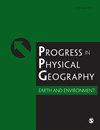在城市森林中识别树种的遥感方法:综述
IF 3.6
3区 地球科学
Q2 GEOGRAPHY, PHYSICAL
Progress in Physical Geography-Earth and Environment
Pub Date : 2024-05-08
DOI:10.1177/03091333241252520
引用次数: 0
摘要
大多数城市树木清查工作都依赖于资源密集型的实地评估,这些评估在空间和时间上分布不均。最近,这些清查工作采用了实地清查与机载多光谱、高光谱、激光雷达和空间多光谱遥感相结合的方法。城市树木 GIS 数据库和遥感方法取得了重大进展,包括划分单个树冠、提取树种指标和采用分类技术。一般来说,遥感方法使用基于像素或基于对象的方法来区分城市树木个体,而图像分类程序通常分为参数方法(如基于回归的分类、贝叶斯和主成分分析)和非参数方法,如机器学习(如随机森林支持向量机)和深度学习(如卷积神经网络)。我们对当前科学现状的综合分析表明,具有最高空间(米)、光谱(波段)和时间(重复时间)分辨率的传感器可实现最准确的树种识别。结合机载激光雷达/高光谱或机载激光雷达/星载高分辨率多光谱传感器,可为最多样化的城市森林提供最高的准确度。与基于像素的参数方法相比,基于对象的非参数方法(如完全卷积神经网络)在精度评估中得分更高。未来的研究可以利用全球/区域地理信息系统(GIS)实地清查数据库,利用激光雷达和空间传感器,扩大多个城市内部和跨城市的研究范围。本文章由计算机程序翻译,如有差异,请以英文原文为准。
Remote sensing approaches to identify trees to species-level in the urban forest: A review
Most urban tree inventories depend on resource-intensive, field-based assessments, which are unevenly distributed in space and time. Recently, these inventories have been conducted using field inventories combined with airborne multispectral, hyperspectral, LiDAR, and spaceborne multispectral remote sensing. Significant advances have been made in urban tree GIS databases and remote sensing methods, which include delineating individual tree crowns, extracting tree species metrics, and employing classification techniques. Generally, remote sensing methods distinguish individual urban trees using either pixel-based or object-based methods, while image classification procedures are typically divided into parametric (e.g., regression-based classification, Bayesian, and principal component analysis) and non-parametric approaches such as machine learning (e.g., random forests support vector machines) and deep learning (e.g., convolutional neural networks). Our synthesis of the current state of science suggests sensors with the highest spatial (m), spectral (bands), and temporal (repeat time) resolutions result in the most accurate tree species identification. Combining airborne LiDAR/hyperspectral or airborne LiDAR/spaceborne high-resolution multispectral sensors yields the highest accuracy for the most diverse urban forests. An object-based non-parametric approach, like a fully convolutional neural network, scores higher in accuracy assessments than pixel-based parametric approaches. Future studies can leverage global/regional GIS field inventory databases to expand the scope of studies within and across multiple cities, utilizing LiDAR and spaceborne sensors.
求助全文
通过发布文献求助,成功后即可免费获取论文全文。
去求助
来源期刊
CiteScore
7.20
自引率
5.10%
发文量
53
审稿时长
>12 weeks
期刊介绍:
Progress in Physical Geography is a peer-reviewed, international journal, encompassing an interdisciplinary approach incorporating the latest developments and debates within Physical Geography and interrelated fields across the Earth, Biological and Ecological System Sciences.

 求助内容:
求助内容: 应助结果提醒方式:
应助结果提醒方式:


